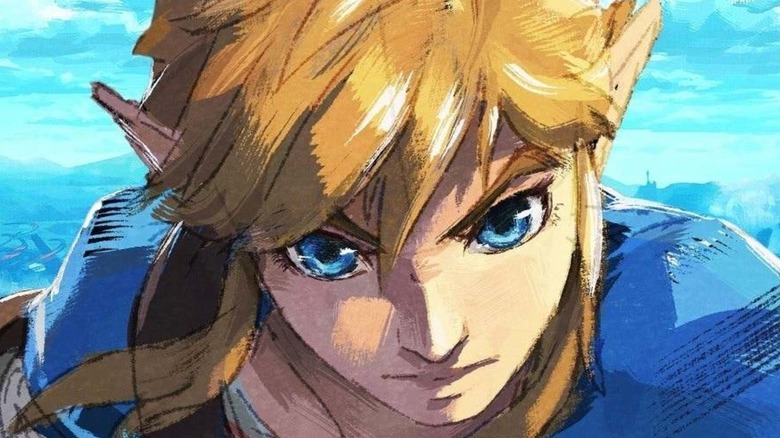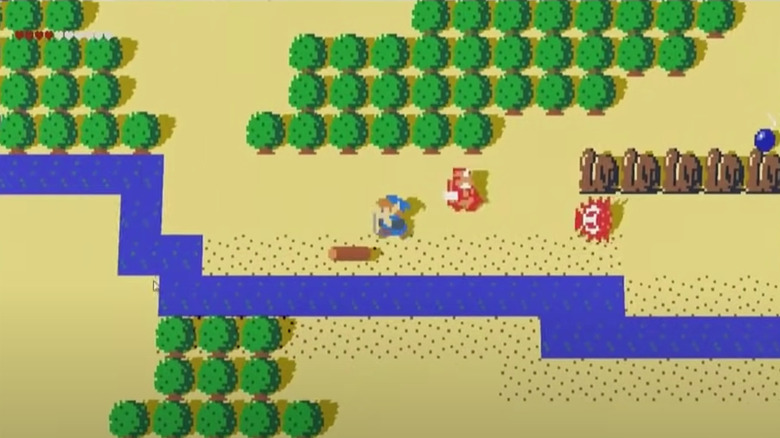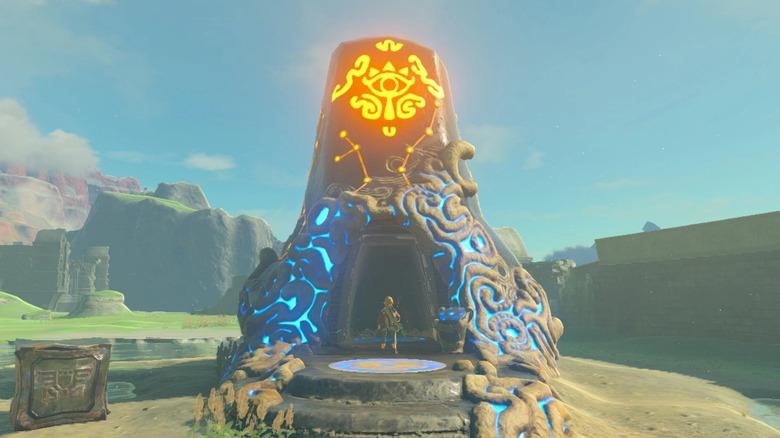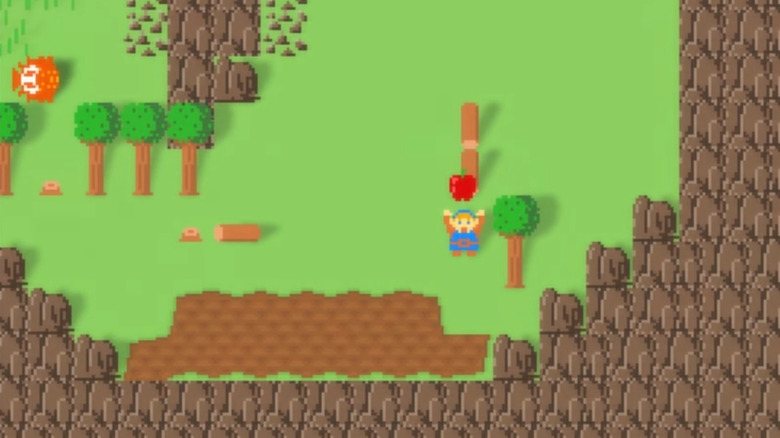The Story Behind The Breath Of The Wild 8-Bit Prototype
"The Legend of Zelda: Breath of the Wild" is one of Nintendo's most successful and critically acclaimed games of all time, let alone just on the Switch. When it was released in 2017, the last mainline "Zelda" game was "A Link Between Worlds" for the 3DS in 2013, and before that was 2011's "Skyward Sword," which wasn't received as well as other "Zelda" games. To differentiate "Breath of the Wild" from the pack, developers wanted to take the "Zelda" formula in a completely new direction and ended up making the first open-world game of the series.
Designing an open world at all, let alone incorporating interaction and physics systems into that world, is no small feat. It took developers years to plan and test new ideas for "Breath of the Wild," and though some features didn't make it through development, it ended up having robust physics systems, environmental/player interactions, and other mechanics that encourage players to take on challenges their own way.
To experiment with and refine potential features, devs created a 2D prototype version of "Breath of the Wild," which was shown off back in 2017 at the Game Developers Conference by "Breath of the Wild" game director Hidemaro Fujibayashi.
Hidemaro Fujibayashi was inspired by the original Zelda games
Fujibayashi began his presentation by reminiscing over his previous work on the "Zelda" series, and gave a glimpse into the 2D prototype right off the bat. He said that it might look like the original "Zelda," but pointed out a blue link, a korok leaf, and a log — all things that true "Zelda" fans know aren't in the NES game — but the prototype was inspired by the open world progression in the NES game. Its simple but open-ended approach did a great job of encouraging players to explore and figure things out on their own, especially at a time when online guides weren't readily available.
Speaking through a translator during the GDC panel, he said he wanted to let players decide, "what they want to do and experience excitement and adventure ... I thought to myself, maybe what I need to do to create such a game is to go back to the essence," Fujibayashi said. "I wanted the player to be able to experience a new sense of adventure again and again and be able to freely navigate through it as they see fit."
The prototype wasn't modeled after the first "Zelda" game in appearance alone, as it also served as a way to test the new mechanics in a simplified, direct way.
Visualizing complex puzzles with multiple solutions was tricky
Fujibayashi spoke on the approach to puzzle design in the "Zelda" series, and pointed out that many puzzles are based on "natural phenomena or simple science facts." He said that in previous games, these puzzles were one-offs or used only in specific areas — but for "Breath of the Wild," he wanted to create systems that could be applied to numerous puzzles. "There was only one rule: there was a situation, and a goal – could you reach it?" Fujibayashi said later in the presentation.
He wanted to "make the game so objects react to the player's action" and to each other, like how an arrow shot through fire can set things aflame, or how chopping down a tree can give players a way to cross a river. These ideas ended up coming to fruition as the gamers see in-game with the interactions between Link's abilities and materials like wood, metal, water, fire, and other elements.
To help the team visualize how these mechanics could be applied to the open-world gameplay and puzzles of "Breath of the Wild," the 2D prototype had to be made. Fujibayashi said he "decided to experiment with this in the simplest way possible" by working with technical director Takuhiro Dohta on this simplified version of "Breath of the Wild" in an effort to bring these new ideas to life – and it worked.
2D allowed developers to explore the physics and player interactions
Fujibayashi showed audience members a comparison of "Breath of the Wild" mechanics like lighting bushes on fire, chopping and pushing logs, and how water affects floating objects. Though it was pretty basic, the prototype ultimately did exactly what the team needed it to do, and helped devs create a game that still has better review scores than many newer RPGs. "Through this kind of simple, primitive experimentation, we made the call of what to change and what not to change to complete the basic game design," Fujibayashi said.
The prototype allowed the team to experiment with these new ideas without wasting time or money on developing mechanics that ultimately would be scrapped. Instead, they could test something out in the simplified version of the game and see how it interacted with other systems. "We used this as a way to experiment ... so you could say this is a legitimate prototype of 'Breath of the Wild,' and hence, Link's blue clothes," Fujibayashi said.
Though fans won't be able to check out this prototype for themselves anytime soon, it's a neat look into how the original "Zelda" transformed the development cycle of "Breath of the Wild."




